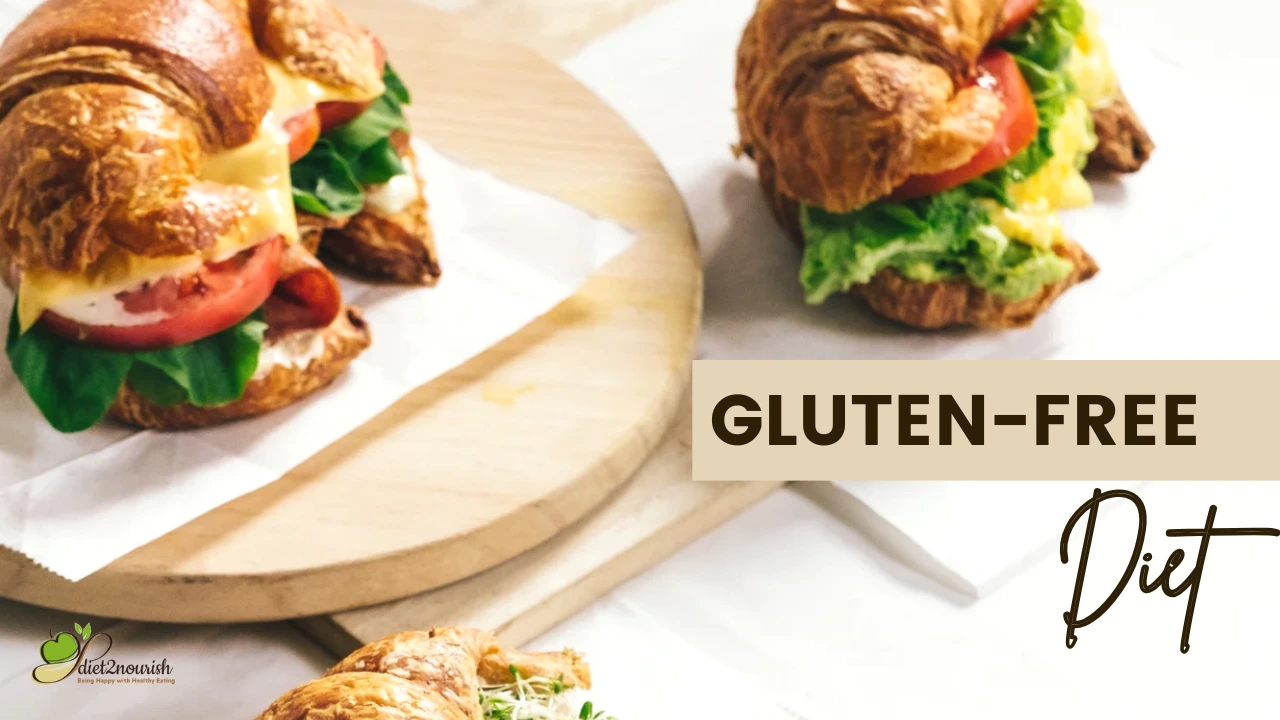Gluten-Free Diet Chart
If you are suffering from Celiac disease – hypersensitivity to a substance called gluten found in many foods, you must be knowing the importance of eating a gluten-free diet. You must have by now, adopted a gluten-free lifestyle. There are many others like you, but suffer from a lesser degree or ‘no’ of gluten sensitivity, yet they all can benefit from a gluten-free diet.
Gluten foods are the ones that contain gluten. Gluten is a kind of protein that is found in cereals, grains, and bread. For many of us, this protein is difficult to digest, and consuming it can result in malfunctioning or disturbances in the functionality of several organs of the body, and the immune system. Gluten or a specific type of protein is common in foods like wheat, barley, rye, oats, and many others.
People who are sensitive to gluten, may face different types of health problems, ranging from serious types to minor ones, affecting life daily like nausea, vomiting, bloating, constipation, muscle and joint pains, and abdominal distention to some serious ones like, miscarriages, delayed puberty, inflamed tongue, depression, anxiety, and autoimmune diseases like diabetes.
What is a Gluten-Free Diet meaning?
A gluten-free diet regime is a way of eating that excludes all foods that contain the protein – gluten. If you are intolerant to gluten, you should avoid eating it completely. Foods that you need to avoid as they are from the gluten food list, are:
Wheat (all wheat-based foods like bran, wheat flour, Kamut, durum, and semolina), malt, barley, and rye.
Foods that may contain ingredients added to them with gluten are:
Cereals (unless any labeled as Gluten-Free), Bread (all wheat bread), Pasta (all wheat pasta), Sauces (Soy sauce, Hoisin sauce, Teriyaki sauce, Salad dressings, and marinades), Snacky Foods (Crackers, Candies, Roasted Nuts, Flavored Chips, Popcorns, Muesli Bars, and other Pre-Packaged foods), and Baked Foods Items (Cookies, Muffins, Cakes, Pastries, and Pizzas).
Completely taking out gluten from the diet could be quite challenging. The best way to avoid any sort of gluten is to eat whole foods and foods that are made of a single ingredient.
What Foods are Gluten-Free?
You have plenty of completely gluten-free food options. Here is a list of gluten-free foods, that you can enjoy if you are gluten sensitive:
Vegetables and Fruits:
All types of vegetables and fruits are naturally gluten-free.
Gluten-free grains:
Corn, Quinoa, Buckwheat, Millet, Amaranth, Arrowroot, and Oats (Before you buy oats from the market, check for the label. It should say “Gluten-Free”).
Flours and Starches:
Corn flour, Soy flour, Chickpea flour, Almond flour, Potato flour, Coconut flour, corn, Chickpeas, and Potatoes.
Nuts and Seeds:
All nuts and seeds are naturally gluten-free.
Herbs and Spices:
All herbs and spices are naturally gluten-free.
Dairy:
Plain milk, Plain yogurt, and Plain cheese. But, if you buy flavored dairy products from the market, better check the label for ‘Gluten-Free”.
Fish, Poultry, and Meat:
All fish, poultry, and meats are naturally gluten-free, but avoid prepackaged and processed ones.
Eggs:
Eggs are naturally gluten-free.
Gluten-Free Diet Benefits
Now that you know what is gluten and what does a gluten-free diet consists of, you would like to go for it, thinking that it is healthy, or maybe you have seen many others lose weight or have claimed to feel healthier with better clarity of mind. But, before you start with living a gluten-free life, let’s take a sneak peek into the gluten-free diet.
A gluten-free diet is otherwise considered a very healthy diet. When you opt for a gluten-free diet chart, you omit the intake of starch and many other food additives. Firstly, this helps you stay aware of what you are putting inside your body, and secondly, keeping gluten-free is one of the best ways for people who have diabetes, other than suffering from Celiac disease.
Noted below are some major benefits of going gluten-free:
The diet helps to improve our gut motility and function
Apart from all those who are gluten intolerant, people who have various digestive issues and are prone to having various digestive health issues, like IBS (irritable bowel syndrome) and others, the best solution is to eat gluten-free.
It helps lessen immune system overload
When the intake of iron in the body is high, the immune system fails to function optimally. When the immune system is not functioning properly, we are more susceptible to illness and infections. Immune system overload does not show up any symptoms, and it is why we need to understand that when we are falling ill or getting infections too often, our immune system may be overloaded. One of the best remedies suggested clinically is to shift our diet, and this includes shifting to a gluten-free diet.
Helps in faster recovery
The body needs to recover naturally, and especially for athletes and weightlifters, their body needs time to recover after heavy and strenuous exercises and events. Adopting a gluten-free diet certainly helps you to recover faster, especially if you are gluten intolerant. Many of today’s recovery drinks and bars are gluten-free.
Aids in better absorption of nutrients from food
A diet rich in grain has been shown to adversely affect the body’s ability to absorb nutrients from the foods we eat. It may cause Celiac disease and even damage the intestinal linings. Eating a gluten-free diet certainly helps.
Reduces chances of Systemic Inflammation (SI)
This is one of the major benefits of shifting to a gluten-free diet. While SI is a complex process to understand but is a result of a weaker immune system. To counter such problems of the immune system and SI, experts suggest adopting an eating habit that is based on whole and plant-based foods. So, eating a gluten-free diet is highly beneficial in such circumstances.
Boosts energy levels
If you are gluten intolerant or suffering from Celiac disease, you might often experience tiredness, feel sluggish, and even experience brain fog. Switching to a gluten-free diet can certainly help.
Gluten-free Diet and Weight Loss
For all those looking to shed some pounds, a gluten-free diet is the latest craze. Eating gluten-free or going for gluten-free weight loss, is a way of eating more whole foods like vegetables, fruits, legumes, and lean meats. This means that you are adopting healthier foods choices in your life that are low in calories.
A gluten-free diet eliminates all foods that have gluten. Going for such foods and eliminating foods like bread, pasta, cakes, and cookies, which are low in nutrients and high in calories certainly aids in weight loss and increased energy levels. It is not at all unusual to lose some weight by following a gluten-free diet but to make your weight loss efforts successful, you will need to avoid processed gluten foods, like pastries, cakes, and all those snacky stiff that feature “Gluten-Free” on them. Your focus should be more on eating plenty of whole foods like fruits, vegetables, and lean proteins.
Gluten-Free Indian Diet
With Indian foods, going gluten-free is not that difficult. You can easily substitute your grain intake with rice, the staple diet of India. In India, we consume more than 1000 varieties of rice. You can even find plenty of options with millet, like the Ragi or the Finger Millet, Jowar or Sorghum, Bajra or the Fox Millet, and Kangni or the Foxtail Millet. You can be spiled with choices with Indian foods when it comes to going gluten-free.
The bottom line is, that your life does not come to a standstill if you are gluten intolerant. In India, you can explore interesting and a variety of options with different types of foods and ingredients. Gluten-Free Diet India is always very exciting and adventurous.
Gluten and dairy-free diet
A gluten and dairy-free diet are self-explanatory – avoid all dairy and dairy-derived foods and avoid all foods that contain gluten. While some may have to follow the diet due to their sensitivities or allergies, others may find the diet relieving all their digestive health issues and keep them energized.
A typical diet consists of a lot of dairy and gluten foods, but you should know that there are plenty of sumptuous and delicious meals that can be made with gluten-free foods and ingredients.
Removing dairy and gluten from your regular food list may seem overwhelming initially, but there are more than you have thought of options to go dairy and gluten-free. Here are some tips that can ease your problem to adopt to gluten and dairy-free eating:
- Take a deep look at your refrigerator and remove anything with dairy and gluten. Be especially attentive to all processed foods that you buy. Make sure that there are no hidden gluten or dairy ingredients in them.
- Develop the knowledge on foods and ingredients that you will need to avoid. Whey, caseinate, malts, and brewer’s yeast are ‘no’.
- There are more foods that you can avoid in gluten and dairy-free eating. Concentrate on the foods that you can eat and build your meals around them. Whole foods like fruits, vegetables, legumes, and lean proteins are a lot healthier and more nutrient-dense.
Look before you buy Look for labels minutely before picking any food from the stores. They should be certified ‘Gluten and Dairy Free. While you eat out, ensure that the foods that you choose, do not have sauces or seasonings with hidden dairy or gluten ingredients.

